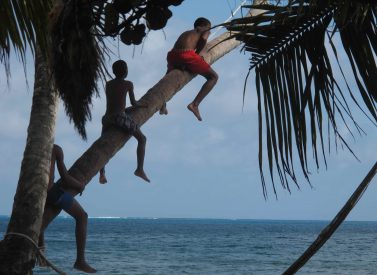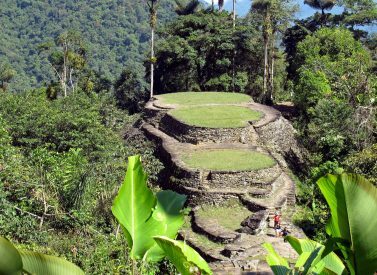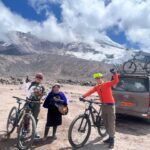
5-Day Cocora Valley Trekking Tour
Hike in one of Colombia’s most beautiful mountain areas on our unique trek in the coffee region of the Cocora Valley.
Our 5-day trek through Los Nevados sees you walking in a trekking paradise of cloud forests, humming birds and volcanoes.
As you hike up to the area’s famous Paramo eco-system, you’ll see the incredible frailejones plants dotting the landscape, existing in what can feel like a lost world which very few have seen.
You stay in mountain fincas, welcoming farmhouse type accommodation run by local people clinging on to their traditional lifestyles, away from the relative crowds of Salento and Cocora.
More on Cocora Valley Trek
Trek through the amazing landscapes and paramos of Colombia, amidst ecosystems that are unique to the tropical Andes, themselves a real biodiversity hotspot.
We trek over passes of 4,150m/13,615ft and trekking will be mainly done along horse trails, passing by ancient tombs of the indigenous folk who lived here before the farmers arrived.
As we walk on there is the chance to see the snow-capped, active and dramatic Nevado del Ruiz volcano.
We can offer 3, 4, 5-day and longer versions of this hike – see a different side to Colombia.
Trip Highlights
Print Share Download as PDF-
Trek far from the crowds through cloud forests into the beautiful paramo
-
Experience local life by staying at fincas, high in the Andes
-
See the strange frailejones plants in a unique ecosystem that few have seen
-
Bilingual guides will show you the wildlife and history of the area as you walk
I was so happy to meet the lovely family and students at Finca Argentina that it filled me with good energy. I had such a lovely evening there.
We saw a lot of changes, and humming birds, which was lovely, but I was very tired at some points and my legs were not responding. But it was great in another sense as I was very happy to get to the hotel, knowing I’d seen wonderful things and that I’d done the trek!
The landscape was great and finding people who live in these remote places, and live so happily in these lovely areas, that was the most beautiful part for me. And for that alone, it was worth it.
Elena Sanchez, Cocora Trek
Full Itinerary
Day 1: Transfer Salento to Cocora, trek to La Pastora farmhouse (L,D)
We recommend you spend at least one night in Salento, immediately before the trek.
The easiest way to access Salento is by flying to Pereira and then taking a taxi/transfer to Salento.
You will spend the day previous to the trek in Salento (2,600m / 8,530ft).
Salento
Salento, one of the oldest coffee towns in the region, is a brightly painted and fun town which acts as the gateway to Las Nevadas mountain range (central Cordillera).
Tourism, coffee and artisanal products are the staples of this small town, founded in 1842 on the old trading paths used by Pijao and Quindio Indians.
‘Calle Real’ (also known as Carrera 6) features many brightly coloured buildings and balconies in a colonial style, where locals mix with the visitors.
Trekking-clad tourists brush shoulders with local farmers who stroll around in their ‘Aguandeñan’ hats (predecessor to the Panama hat), wellington boots, machetes, moustaches and customary poncho folded over their shoulders.
There are many restaurants to choose from, trout the local speciality, as well as coffee farms to visit.
Many coffee farms are small and organic and approved by Rainforest Alliance, as they use natural ways to grow their coffee plants, rather than chemicals to enhance crops.
The coffee is fantastic and you can buy beans or ground coffee to take home. Read more about what to do in Salento.
The trek
At 6:30am transfer from your hotel to El Cedral (1hr 45mins).
El Cedral is located at 2,100m/6,889ft and here we start walking.
We begin our trail up to La Pastora refuge, situated in Ucumari Natural Regional Park. Today we’ll be walking alongside the river Otun, one of the best-preserved river basins in South America.
We have to ascend around 300m in total today to reach La Pastora (2,450m/8,038ft), which we aim to get to by lunch time.
We begin our walk through excellently conserved cloud forest and make our way along this jungle trail. We cross from the Boquia river basin into the legendary Otun basin, one of the best-preserved river basins in Latin America.
A steep ascent is followed by a descent as we make our way across valleys to eventually drop down to around 2,300m into the Regional Natural Park Ucumari.
Our destination is La Pastora, located at the end of a largely deforested valley surrounded on all sides by forest-clad cliffs. Views are stunning.
Cabins await, along with a log fire. A hearty dinner makes for a good night’s sleep before the next day’s big climb.
Highest point: 2,450m/8,038ft
Starting altitude: 2,100m/6,889ft
Finishing altitude: 2,450m/8,038ft
Height gained: 350m/1,148ft
Day 2: Trek up to El Bosque Farmhouse (B,L,D)
It’s a big day today as we aim to get further up the valley and to some higher climes.
We start early start for our ascent to the village of El Bosque, further along the River Otun valley.
The walk will last 6-7 hours with 1,125m of ascent over 9km, very similar to a big Munro day. This day will be a journey through ecosystems and the experience never fails to amaze.
A steady climb will take us to 3,000m where walls of high-Andean forest and waterfalls surround us before the real upward hiking begins. We walk up and along a 600m high ‘white-stair’ of rocks that never seems to end.
The air starts to become thin and elfin forest begins to appear, as do Jersey cows and thick mist.
On a clear day entering the village of El Bosque is an emotional sight.
It’s not only because of the view of the camp and the signal that the climb is over, but also because this perfect horseshoe caldera is one of PNN Los Nevado’s most beautiful locations.
Condors and Paramo eagles can be seen hovering on the thermals.
After a rest, we can visit the local farm and chat to the locals en El Bosque village. As dusk approaches, there is the option to scout for Mountain Tapir or the endemic Rufous-fronted Parakeet.
Highest point: 3,600m/11,811ft
Starting altitude: 2,450m/8,038ft
Finishing altitude: 3,600m/11,811ft
Height gained: 1,125m/3,691ft
Day 3: Trek Berlin Valley to El Berlin Finca (B,L,D)
Following the exertions yesterday, today is a shorter day.
We take a leisurely breakfast and then it’s a later start to begin trek to El Berlin valley.
We’ll be at 3,819m/12,530ft by the end of the day. It should take 3-4 hours to walk the 5-6km up to this higher level.
We hope to get to Berlin farm for lunch and then have the afternoon free to explore the valley, or take it easy as the body adjusts to these higher levels.
Highest point: 3,819m/12,530ft
Starting altitude: 3,600m/11,811ft
Finishing altitude: 3,819m/12,530ft
Height gained: 219m/719ft
Day 4: Trek high pass Alto de la Amargura (4,170m/13,681ft) to La Argentina Finca (B,L,D)
Today we hit our highest point as we go over a pass of 4,170m/13,681ft, the Alto de la Amargura – ‘High point of BItterness’ – a fitting name for this mountain pass that can be pounded by biting winds.
We’ll walk for 5-6 hours to go up and over the pass and then down to La Argentina farm, which is situated at 3,476m/11,404ft. Dona Gloria is the lovely host here.
There are various stops so we can look at the frailejones plants in this area, as well as more Sub-Paramo flora.
With good weather there are some excellent look out points over the high Andean basin of the River Cardenas.
Time in the afternoon to explore local surroundings and other trails that head deep into the forest.
Highest point: 4,170m/13,681ft
Starting altitude: 3,819m/12,530ft
Finishing altitude: 3,476m/11,404ft
Height gained: 351m/1,152ft
Day 5: Descend to Cocora, transfer to Salento, ends (B,L)
We bid a fond farewell to Dona Gloria an La Argentina finca, and start a lovely descent down to Cocora Valley.
First we skirt the mountains and farmlands before plunging down into the cloud forest. You’ll feel how quickly we go from the crisp air into the warmer valley, seeing different trees, foliage and animals as we descend.
Hummingbirds and flowers become more prevalent as the moisture and heat of the sun start to warm our bones.
There are some energetic down hills to bound down, until we reach the valley of Cocora, and its incredible, gigantic wax palm trees.
These giant thrust up to 60 metres from earth to skyline with some reaching up to 70 metres, making it the tallest palm tree in the world.
They pock the hills and make them incredibly photogenic.
We take lunch in Cocora, jump aboard a Willys Jeep and head back to Salento.
Highest point: 3,476m/11,404ft
Starting altitude: 3,476m/11,404ft
Finishing altitude: 2,100m/6,889ft
Height lost: 1,376m/4,514ft
Prices From $1,476 / £1,200 per person
What's Included?
Transfers and road transport as listed on Cocora Valley trek, accommodation, all entrance fees to parks and reserves, guide (English/Spanish speaking), meals as listed (B=breakfast, L=lunch, D=dinner), drinking water and snacks, sleeping bag and thermarest for use at farmhouses
What's Not Included?
International or domestic flights, laundry, personal expenses, tips, any Salento or Pereira services or hotels, visa, items of a personal nature, alcoholic or soft drinks, meals not listed.
Accommodation
Local farmhouses will be used for this trek. Houses are farms with basic rooms that have been set aside for people to spend the night in. These rooms are basic with wooden bunks and stiff mattesses. Use of an additional sleeping bag and thermarest will be provided for.
If you wish to camp we can arrange that and we use sites close to the farmhouses. This adds to the price (please ask) because we need more mules to carry the kit.
Tour Staff
A trek leader will be with you (English-speaking) throughout the trek – they are from the area and have trekked the mountains many times.
Your baggage is carried by mules and the mule driver also comes from the local area. The farmhouses/fincas we use to stay in (you can also camp, extra cost) are all run and owned by local families.
Meals
Breakfasts will likely be eggs with arepa (typical toasted cornmeal patty) and possibly rice and lentils.
Lunches will either be at farmhouses or boxed lunches, with snacks, prepared at the farmhouses and by our guides.
Dinners will consist of a protein, lentils or frijole beans and rice with potato, possibly in a stew. This will vary from farm to farm, but normally folk are not picky after a hard day’s trek.
Drinking water will be provided using a Steripen UV steriliser though you can bring your own water purification tablets.
Activity Level
We have classified this as a moderate trek, and you need to be in good physical shape for it.
You hike 4-7 hours a day on 4 consecutive days, over mountain trails at elevation.
There is a high altitude pass to cross at 4,150m/13,615ft before dropping into lower elevations.
Pre-trip preparation should include challenging cardiovascular exercise (including regular hikes on varied terrain) and a healthy, balanced diet.
Well-worn hiking boots and additional an acclimatisation night or two before the trek are both highly recommended.
All guests are encouraged to hike at their own pace, taking breaks whenever needed, to ensure a successful and enjoyable trek for all.
Most people go to bed fairly early after a long day trekking, to recover energy for the morning.
Walking can be adapted to suit, increased or decreased in difficulty and also overall duration changed depending on requirements.
Practical Information
Introduction to Colombia
Colombia is the country that has everything you could need from a South America holiday.
Diverse people and landscapes make this a country rich in wildlife, landscapes and culture.
Hikers can choose to trek to glaciers on snow-capped peaks, or through steamy forest to hidden ruins, or to unique Paramó plains.
Cyclists can pedal over and around the Andean peaks that dominate, and adventure seekers can try anything from paragliding to canyoning.
Beach lovers can enjoy surfing and relaxing with a Colombian twist, or head to islands for a more Caribbean vibe.
Prefer wildlife? Try the pacific coast and its whales and turtles, or perhaps the Amazon and its diverse flora and fauna.
The cities are cosmopolitan and cultured, replete with incredible museums with enormous collections.
Geography of Colombia
Colombia is divided into five main geographical regions: Pacific, Llanos, Amazon, Caribbean and Andes.
The Andes dominate and have three main branches, all running roughly from south to north.
The Cordillera Occidental lies furthest to the west, running parallel to the Pacific coast; Furthest east lies The Cordillera Oriental running almost to the whole length of the country and incorporating Bogota; and in between these two, is the Cordillera Central.
Less than 3% of the population live in two lowland areas that comprise more than half of Colombia’s overall size.
The first lies to the east of the Andes called Llanos and is a savannah, and forms a part of the Orinoco river basin.
The second is Colombia’s steamy Amazon rainforest, which lies to the far south east of the country and covers almost one third of the entire country.
In the north is the hot and humid Caribbean coast, characterised by beautiful beaches and turquoise seas as well as fertile and low-lying plains and La Guarija Desert.
Colombia lays claim to two small islands, close to Nicaragua, called San Andres and Providencia, and islands in the Pacific and these are known as the insular area.
The narrow Pacific coastal lowlands are densely covered with vegetation, with very few people living here.
Kit List
Good kit is vital for every trip.
Overview
In general you’ll need cool clothes for the trekking days if weather is good, and then warmer clothes for nights or inclement weather.
If you choose to camp, then you need to take a sleeping bag/mattress or can hire locally (advance notice required).
Give plenty of thought to kit selection, and try to keep weight down.
Detailed kit list
Medium weight waterproof jacket and trousers.
2-3 long-sleeve shirts – no cotton.
2-3 short-sleeve T-shirts – no cotton.
2 pairs trekking trousers.
2 pair of hiking shorts – cotton or synthetic material (no jeans).
2-3 mid-weight (wool or synthetic) socks.
2-3 liner/thin/running socks if needed.
Hiking boots that are waterproof, give ankle support and are well broken-in, and suitable for muddy terrain.
Training shoes / all-terrain sandals – for crossing rivers and relaxing at camp.
Swim suit.
1 fleece or sweat trousers.
1 lightweight wool sweater or windproof fleece.
1 wool or synthetic warm hat.
Broad-brimmed sunhat, essential.
Sunglasses with UV filter.
Bandana – to protect neck from strong sun and use in colder weather.
Medium weight gloves.
Warm hat for the evenings.
Daypack (at least 30 litres). Comfortable and with waterproof lining or cover.
Large rucksack / sports bag for main luggage.
Sleeping bag liner – we provide blankets and sheets in the refugios, but the liner works well for hygiene.
Water bottle (2 litres approx.) & purification tablets.
Personal first-aid kit to include: painkillers, plasters (band-aids), moleskin, anti-biotic cream, anti-diarrhoea tablets, throat lozenges, re-hydration salts & personal medication.
Insect repellent (just in case) and after-bite
Quick dry towel & wash-kit.
Trekking poles (optional).
Wet Wipes/antiseptic hand-wash cream.
Sunscreen (factor 30+) and lip salve.
Head-lamp (plus spare bulb and batteries).
Plastic bags – ‘Zip-loc’ & tough bin liners.
Camera and film / memory cards (take at least twice the amount you think you will need!).
Powertraveller charger (US type socket).
Book,Kindle or other to help pass the time.
Binoculars.
Assorted stuff bags.
Miscellaneous others
Passport.
Money belt.
U.S. dollars cash, mixed-denomination notes, undamaged and unmarked.
ATM cash/credit card.
Any inoculation certificates.
Personal & medical insurance certificates.
Portable Carbon Monoxide Detector.
Weather in Colombia
Colombia has warm to hot average temperatures all year round.
Cartagena on the Caribbean coast, for example, averages around 325 days of sunshine a year, even during its ‘winter’.
There are, however, two rainy and dry seasons that Colombians call summer and winter.
The severity and length of these seasons also depends on where you are in the country – the coast has slightly more severe and longer dry seasons than the Andean region, for example.
Dry season
Dec-March and July-early Sept.
On the coast the rainfall stays low during the whole of September.
Wet Season
April to June and October to early December.
Much depends on where you are in the country. Up in the mountains one of the great attractions of Colombia is the fact that within half and hour of travel, either losing or gaining altitude, you can emerge in a totally different climate, substantially hotter and drier, or colder and more humid, depending on where you are.
On mountain treks the temperature will decrease around 6°C for every 1,000 metre (3,300 feet) increase in altitude.
In the Paramo, temperatures average around 5ºC and drop below freezing at nighttime.
Again, variations depend on geography.
ATOL holiday protection
Andean Trails has 25 years of experience of putting together the best South America holidays.
We pay a fee to the CAA for every licensable passenger we book since we hold an Air Travel Organiser’s Licence granted by the Civil Aviation Authority. In the unlikely event of our insolvency, the CAA will ensure that you are not stranded abroad and will arrange to refund any money you have paid to us for an advance booking.
We also offer ATOL (Civil Aviation Authority) protected holidays to give our customers peace of mind when booking and travelling.
When you buy an ATOL protected air holiday package from Andean Trails Ltd you will receive a Confirmation Invoice from us confirming your arrangements and your protection under our Air Travel Organiser’s Licence number 6275.
You can read more about ATOL, who is covered and what protections you have if not ATOL-covered, on our ATOL page.
What is ATOL?
The CAA’s ATOL scheme offers protection to your money and your holiday if you book with us. Not everybody is covered (see ‘Who is covered?’ for more), as you must purchase an ‘air package holiday’ with Andean Trails to be protected.
And ‘air package holiday’ is defined as including a flight and some ground services (hotel, transfer, trek etc). This is also known as an ‘ATOL-protected holiday’.
Who is covered?
To be covered by ATOL, you must book a flight and some ground services with us and be from the UK. If you are from the UK and only book ground services and no flights, you are not covered by ATOL (see below for more on how non-ATOL clients are covered).
If you are outside the UK and buy flights with us, you will be ATOL protected IF any of the flights booked with Andean Trails touches/stops in the UK at any point during your holiday package booked with us.
If you buy your flights elsewhere, please check with that agent if you are ATOL protected. Be careful with online flight purchases and make sure you know what protection you have, if any, before paying for flights.
Not all holiday or travel services offered and sold by us will be protected by the ATOL scheme. Please ask us to confirm what protection may apply to your booking.
For land only holidays not involving any air travel, in accordance with “The Package Travel, Package Holidays and Package Tours Regulations 1992”, all UK passengers booking with Andean Trails Ltd. are fully protected for the initial deposit and subsequently the balance of all money paid to us, arising from cancellation or curtailment of travel arrangements due to the insolvency of Andean Trails.
I’m not ATOL covered, what protection do I have?
If you are not ATOL covered, any payments you make to us go to a Trust account.
We can only access this money once your tour has been completed, meaning that if anything happens to Andean Trails Limited while you are on holiday, then your money is secure and you can either complete the trip or be able to make it home.
If you pay for your holiday with a credit card, some offer payment protection – please check with your cardholder.
You also should have cancellation protection written into your insurance (which we recommend you have at the time of booking) in case you need to cancel.
ATOL protection
Andean Trails has 25 years of experience of putting together the best South America holidays.
We pay a fee to the CAA for every licensable passenger we book since we hold an Air Travel Organiser’s Licence granted by the Civil Aviation Authority. In the unlikely event of our insolvency, the CAA will ensure that you are not stranded abroad and will arrange to refund any money you have paid to us for an advance booking.
We also offer ATOL (Civil Aviation Authority) protected holidays to give our customers peace of mind when booking and travelling.
When you buy an ATOL protected air holiday package from Andean Trails Ltd you will receive a Confirmation Invoice from us confirming your arrangements and your protection under our Air Travel Organiser’s Licence number 6275.
You can read more about ATOL, who is covered and what protections you have if not ATOL-covered, on our ATOL page.
What is ATOL?
The CAA’s ATOL scheme offers protection to your money and your holiday if you book with us. Not everybody is covered (see ‘Who is covered?’ for more), as you must purchase an ‘air package holiday’ with Andean Trails to be protected.
And ‘air package holiday’ is defined as including a flight and some ground services (hotel, transfer, trek etc). This is also known as an ‘ATOL-protected holiday’.
Who is covered?
To be covered by ATOL, you must book a flight and some ground services with us and be from the UK. If you are from the UK and only book ground services and no flights, you are not covered by ATOL (see below for more on how non-ATOL clients are covered).
If you are outside the UK and buy flights with us, you will be ATOL protected IF any of the flights booked with Andean Trails touches/stops in the UK at any point during your holiday package booked with us.
If you buy your flights elsewhere, please check with that agent if you are ATOL protected. Be careful with online flight purchases and make sure you know what protection you have, if any, before paying for flights.
Not all holiday or travel services offered and sold by us will be protected by the ATOL scheme. Please ask us to confirm what protection may apply to your booking.
For land only holidays not involving any air travel, in accordance with “The Package Travel, Package Holidays and Package Tours Regulations 1992”, all UK passengers booking with Andean Trails Ltd. are fully protected for the initial deposit and subsequently the balance of all money paid to us, arising from cancellation or curtailment of travel arrangements due to the insolvency of Andean Trails.
I’m not ATOL covered, what protection do I have?
If you are not ATOL covered, any payments you make to us go to a Trust account.
We can only access this money once your tour has been completed, meaning that if anything happens to Andean Trails Limited while you are on holiday, then your money is secure and you can either complete the trip or be able to make it home.
If you pay for your holiday with a credit card, some offer payment protection – please check with your cardholder.
You also should have cancellation protection written into your insurance (which we recommend you have at the time of booking) in case you need to cancel.
Kit list, Colombia Caribbean
Good kit is vital for every trip.
Book with Andean Trails and get 15% off Páramo’s fantastic ethical and high performance outdoor gear.
Overview
Bogotá is a city high in the Andes Mountains (2,625 metres) and has a spring-like climate, when the weather is generally cool and variable. It can rain, the sun can shine and it can be foggy and chilly.
In the Caribbean, it’s hot and humid, so it’s shorts, swimwear, sun cream, head protection, t-shirts, sandals and cotton products are cooler.
Give plenty of thought to kit selection, and try to keep weight down.
Below is a more detailed guide.
Detailed kit list
- Light weight waterproof jacket.
- 2-3 long-sleeve shirts – no cotton.
- 2-3 short-sleeve T-shirts – no cotton.
- 2 pair of hiking shorts – cotton or synthetic material (no jeans).
- 2-3 liner/thin/running socks if needed.
- Athletic-type socks, for city use.
- Light weight hiking boots that are waterproof and well broken-in, and suitable for muddy terrain.
- Training shoes / all-terrain sandals – for crossing rivers and relaxing at camp.
- Sandals.
- Swimsuit (s)
- 1 fleece or sweat trousers (for cold evenings in Bogota).
- 1 lightweight wool sweater or windproof fleece
- 1 wool or synthetic warm hat.
- Broad-brimmed sunhat, essential.
- Sunglasses with UV filter.
- Bandana – to protect neck from strong sun.
- Daypack (at least 30 litres). Comfortable and with waterproof lining or cover.
- Large rucksack / sports bag for main luggage.
- Water bottle (1-2 litres approx.) & purification tablets.
- Personal first-aid kit to include: painkillers, plasters (band-aids), moleskin, anti-biotic cream, general antibiotics (ask your GP), after-bite (tiger balm), anti-diarrhoea tablets, throat lozenges, re-hydration salts & personal medication.
- Insect repellent (just in case).
- Quick dry towel & wash-kit.
- Wet Wipes/antiseptic hand-wash cream.
- Sunscreen (factor 40+) and lip salve.
- Head-lamp (plus spare bulb and batteries).
- Penknife.
- Travel alarm clock.
- Plastic bags – ‘Zip-loc’ & tough bin liners.
- Camera and film / memory cards (take at least twice the amount you think you will need!).
- Powertraveller charger (US type socket)
- Book, e-book, mp3 player/ipod or other to help pass the time.
- Binoculars.
- Spanish/English phrasebook.
- Extra snacks i.e. cereal bars or favourite chocolate bars.
- Assorted stuff bags.
Miscellaneous others
- Money belt.
- Passport.
- U.S. dollars cash, mixed-denomination notes, undamaged and unmarked.
- ATM cash/credit card.
- Any inoculation certificates.
- Personal & medical insurance certificates.
- Presents e.g. Postcards from home.
- Comfortable clothes for travel, smart clothes for night life.
Geography of Colombia
Colombia is divided into five main geographical regions: Pacific, Llanos, Amazon, Caribbean and Andes.
The Andes dominate and have three main branches, all running roughly from south to north.
The Cordillera Occidental lies furthest to the west, running parallel to the Pacific coast; Furthest east lies The Cordillera Oriental running almost to the whole length of the country and incorporating Bogota; and in between these two, is the Cordillera Central.
Less than 3% of the population live in two lowland areas that comprise more than half of Colombia’s overall size.
The first lies to the east of the Andes called Llanos and is a savannah, and forms a part of the Orinoco river basin.
The second is Colombia’s steamy Amazon rainforest, which lies to the far south east of the country and covers almost one third of the entire country.
In the north is the hot and humid Caribbean coast, characterised by beautiful beaches and turquoise seas as well as fertile and low-lying plains and La Guarija Desert.
Colombia lays claim to two small islands, close to Nicaragua, called San Andres and Providencia, and islands in the Pacific and these are known as the insular area.
The narrow Pacific coastal lowlands are densely covered with vegetation, with very few people living here.
Introduction to Colombia
Colombia is the country that has everything you could need from a South America holiday.
Diverse people and landscapes make this a country rich in wildlife, landscapes and culture.
Hikers can choose to trek to glaciers on snow-capped peaks, or through steamy forest to hidden ruins, or to unique Paramó plains.
Cyclists can pedal over and around the Andean peaks that dominate, and adventure seekers can try anything from paragliding to canyoning.
Beach lovers can enjoy surfing and relaxing with a Colombian twist, or head to islands for a more Caribbean vibe.
Prefer wildlife? Try the pacific coast and its whales and turtles, or perhaps the Amazon and its diverse flora and fauna.
The cities are cosmopolitan and cultured, replete with incredible museums with enormous collections.
Colombia’s Caribbean Coast
Sip a cooling drink while lazing on warm, golden sands and listen to the crashing waves of the Caribbean.
The famous Parque Nacional de Tayrona, Santa Marta and the neighbouring Palomino are fabulous places from which to enjoy Colombia’s divine mainland coast.
For the more energetic, hike through lush forests replete with colourful birdlife to the enigmatic Cuidad Perdida – the Lost City.
For those with more time, fly to Providencia, truly the white-beached Caribbean dream island of dreams.
Colombia’s Coffee Region
Brightly-painted Salento is one of the oldest coffee-producing towns in Colombia and maintains a captivating mix of tradition and new world bustle.
Trekking-clad tourists brush shoulders with local farmers who stroll around in their ‘Aguandeñan’ hats (predecessor to the Panama hat), wellington boots, machetes, moustaches and customary poncho folded over their shoulders.
Then travel by ‘Willy’ jeep to Cocora and the Las Nevadas mountain range.
From Cocora, you can enjoy hikes through cloud forest, visit a traditional coffee plantation and gaze up at the Gigantic Wax Palm trees that grow here, thrusting up to 60m/197ft from earth to skyline.
Bogotá, Colombia
Nestled at 2,650m/8,694ft between Andean peaks, Bogotá enjoys a near year-round spring climate. This recurring energy permeates every aspect of life here.
Wander La Candelaria’s winding and colourful streets with its coffee shops, artisanal shops and dynamic nightlife.
Peruse the world’s most important and impressive collections of pre-Colombia gold work at the Muséo de Oro, one among many excellent museums.
Savour wonderful culinary treats and zesty fresh fruit juices on the streets.
This is Bogota, Colombia’s vibrant capital.
Cartagena de las Indias, Colombia
Writers, painters and now travellers flock to Cartagena, a wonderful colonial port.
Cartagena’s city wall wraps itself around historic churches, plazas and narrow streets. Fruit sellers, dancers, musicians and more all give the city a vibrancy.
The old ways runs alongside the modern as the very best in 5* hotels and top-end restaurants sit on streets whose taxis are horse-drawn carriages.
Visit castle San Felipe de Barajas for a tour, and the Getsemani neighbourhood for street art and drinks.
Bazurto market is chaotic, enormous, frenetic and often smelly – this is the real underbelly of Cartagena, away from its glistening lights.
Prices From $1,476 / £1,200 per person
2025 guide price, based on two people, shared tent
Private departures, year round
Longer and shorter hikes possible
Price lowers if more people join
Dates & Prices
Prices From $1,476 / £1,200 per person
2025 guide price, based on two people, shared tent
Private departures, year round
Longer and shorter hikes possible
Price lowers if more people join
Can’t find what you’re looking for? Get in Touch
+44 (0)131 378 5593
+44 (0)131 554 6025



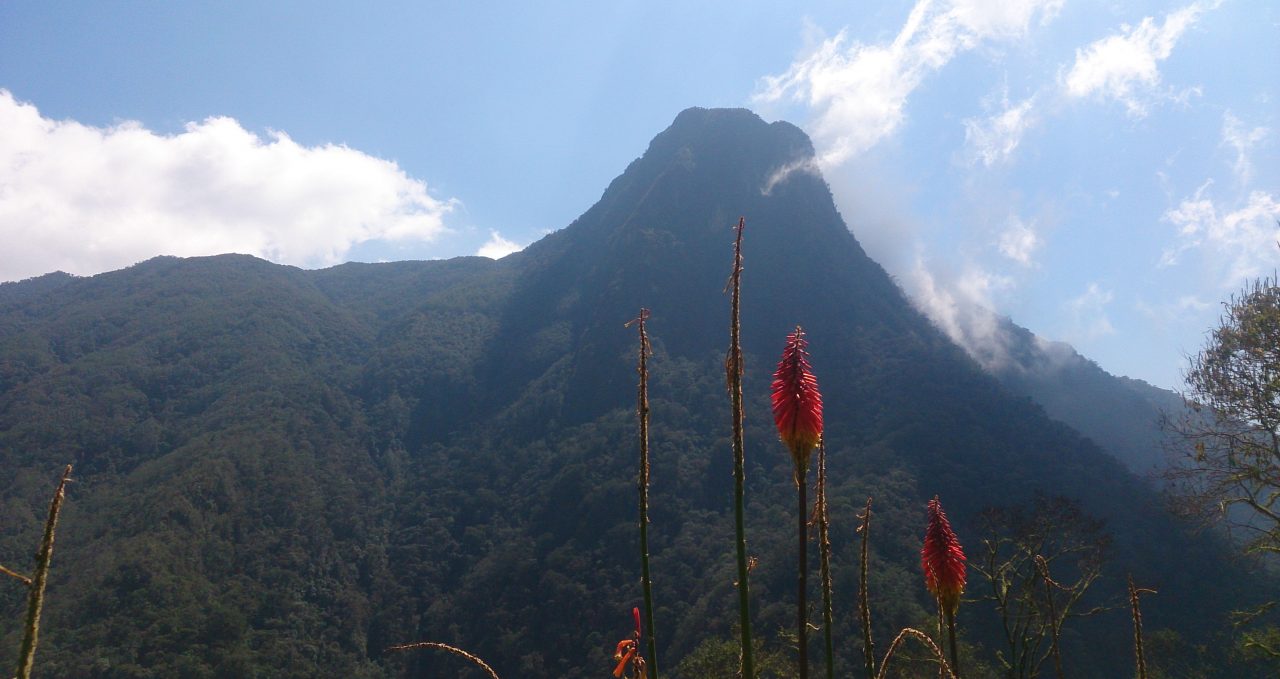
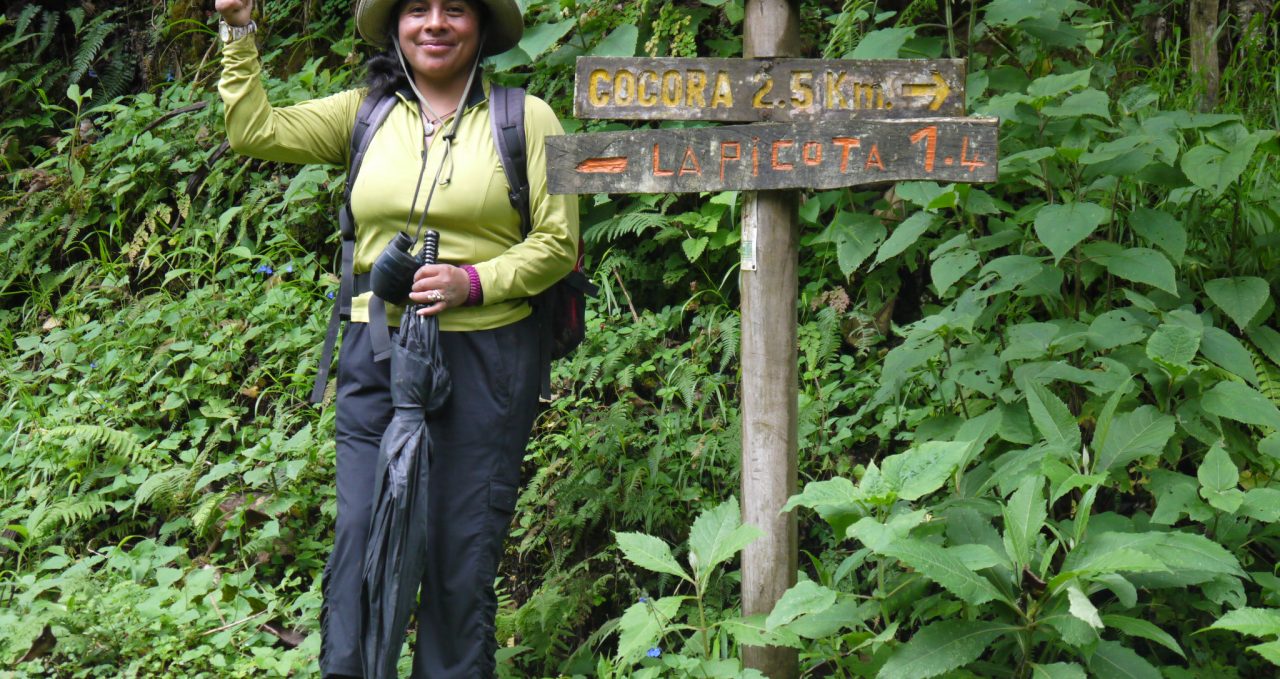
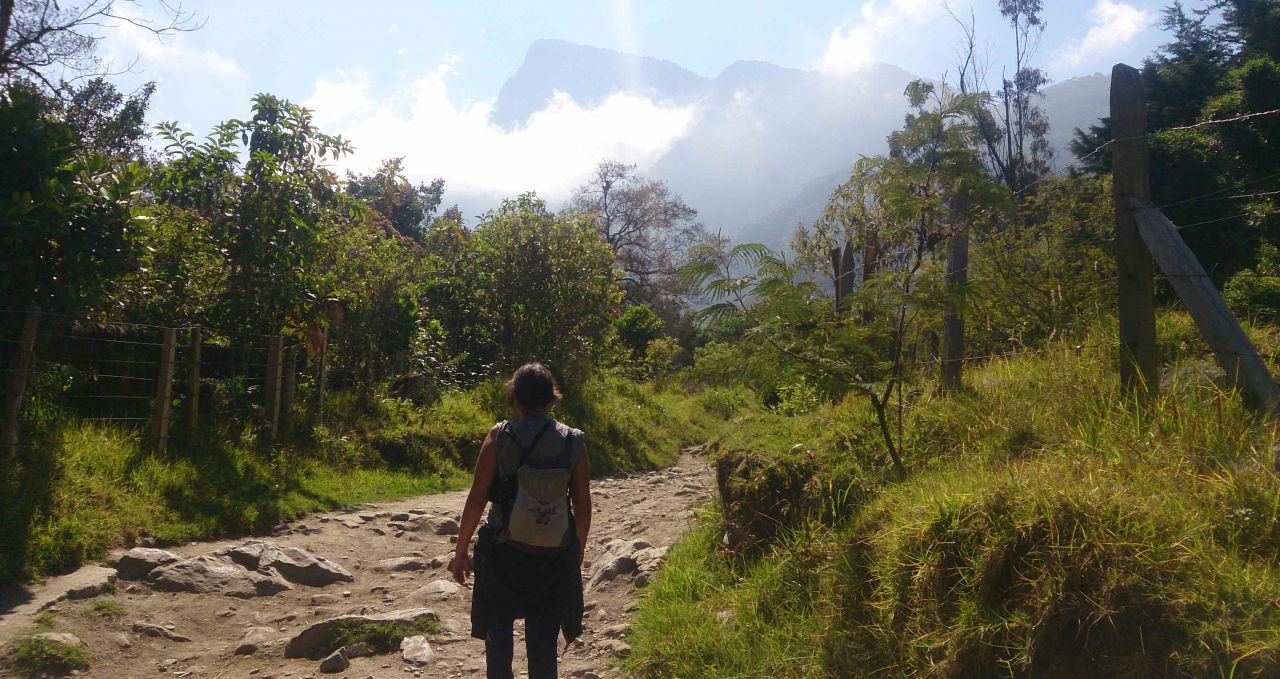
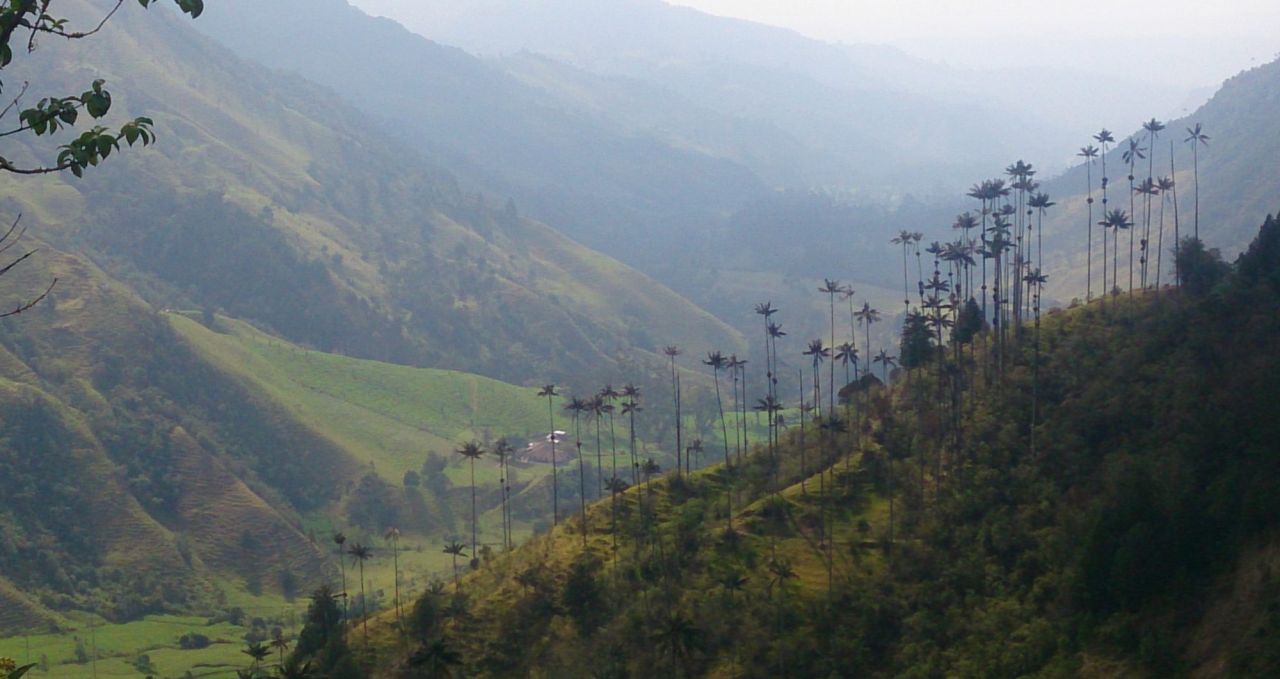
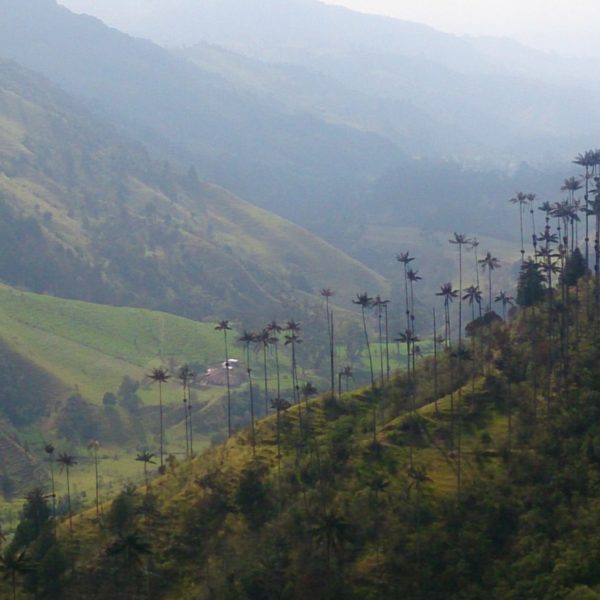
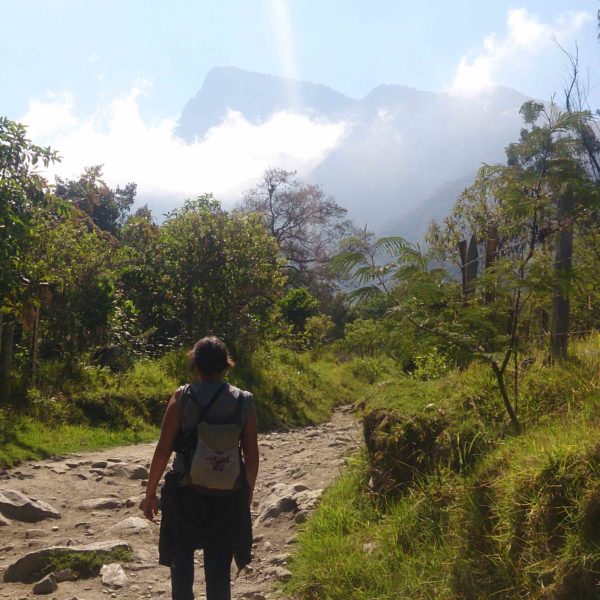
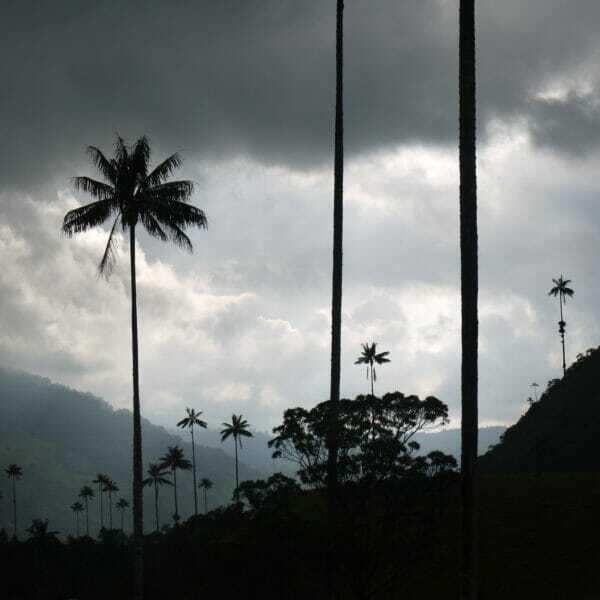
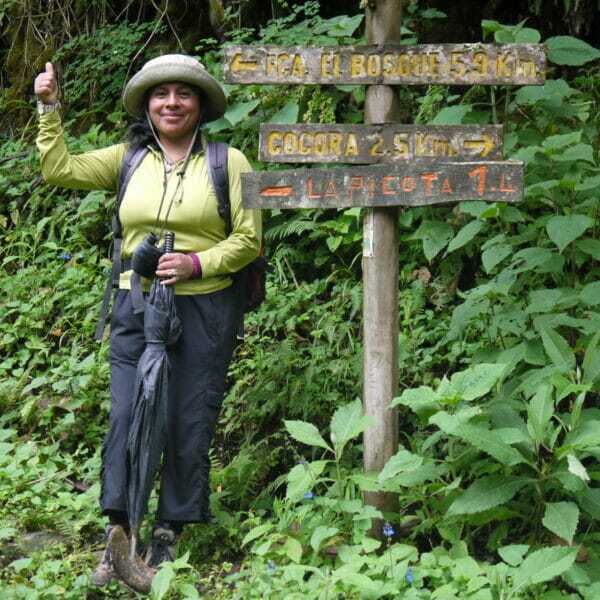
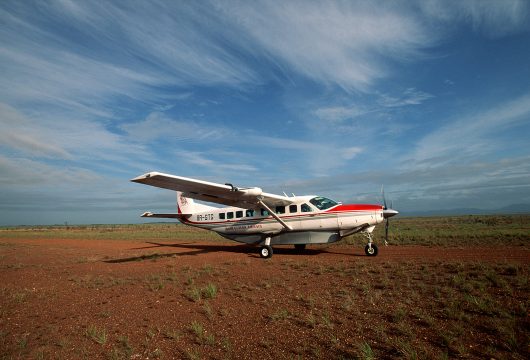
 a Group Tour
a Group Tour 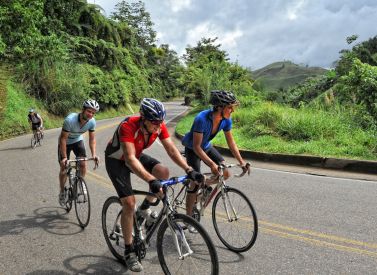
 a Tailor Made Tour
a Tailor Made Tour 